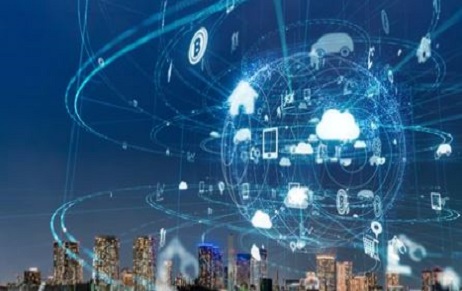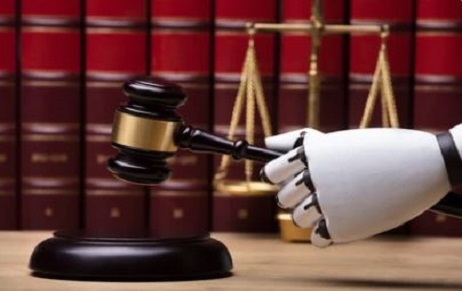A new era started with the innovation of Artificial Intelligence (AI). AI systems can produce…
AI in the Indian Judiciary: Predicting Justice
ABSTRACT
The project employs doctrinal research methods, i.e. secondary research which involves writing on basis of other materials available and this project will attempt to critically analyze the role of Artificial Intelligence (AI) in Indian judiciary. While delivering a judgement, a judge is expected to be mindful of the values of the society., They are expected to dispense justice in sync with ethics and values that are followed by the people of the country. Before coming to a definitive conclusion, A judge is required to lay down the groundwork of delivering the judgement. In doing so they have to meticulously examine the impact their words will have on the individual party and the socio-legal impact their order will have on the society at large The human element cannot be separated from the judicial concepts of “Justice”, “equity”, “intent” and “reasonable care”.
Introduction
Indian Judiciary has already introduced narrowly tailored algorithms which are trained through machine and deep learning techniques in the administrative functions, from scheduling hearing and creating cause lists, review of evidentiary documents, smart e-filing of cases to organization and notification of cases. The Supreme Court Vidhik Anuvaad Software (SUVAAS) is a task specific algorithm which has been designed by the AI Committee of the supreme court which eases the herculean task of translating judicial order and rulings. Recently, SC also launched the Supreme court Portal for Assistance in Court’s Efficiency (SUPACE) portal which helps the judges in legal research and projects case progress. Even though the development of AI in the judicial sector has reduced the task of the Judges, it has not entirely reshaped the Justice system. And the question still stands, whether AI adjudication will be able to fit into the role of the judge and deliver a Judgement with Equity, justice, and good conscience.[1] Error are inevitable, human error are very common as witnessed in cases like the “skin to skin “Judgement,[2] similarly in the event of such a mishap, who will be held liable for it?

Need of AI in the Indian judiciary
There are three instances in which AI can be integrated into the Judicial system. The first being a “supportive technology” wherein the machine assists in providing advisory support and information to people engaged in the judicial system. The second form is kind of “replacement technology” which replaces a limited amount of human intervention from the working of judicial system. And thirdly a “disruptive technology” which aims at changing the dimensions at which justice is dispensed and the working of judges through predictive justice and analytics. The question with respect to the need of AI in the Indian Judiciary was flagged by the Law Minister, Mr. Kiren Rijiju in the first part of the budget session of the Parliament.[3] Mr. Rijiju’s contentions were based on the fact that India needed to increase the efficiency of the judicial system and the disposal rate of the cases. The Former Chief justice of India, Justice NV Ramana stated that the Judge to case ratio of the country was around 20 judges per million people where over 40 million cases were still pending before the various courts in India. This is a limitation of the Indian judiciary which can be tackled with the introduction of AI for decision making. The structure of the Indian Judiciary is such that it leads to the cases being pushed for years and years without coming to a conclusive outcome. The appellate system of the Indian judiciary is such that, although it does offer a fair trial to the individual but also demands a monetary investment and time from the parties involved. The introduction of AI in a long and complicated process can save the time and money of the parties so involved and more importantly reduce the pendency of cases in the courts. A major setback for the administration of Justice in India is due to the delay in the decision making.[4] Another important issue that an AI tool can resolve is the access of justice to a greater population. This point is interrelated to the point discussed above. The population of India is brimming to an extent where the individuals do not have access to justice merely because they don’t have the knowledge of their rights and access to any portal through which they can attain the knowledge. Many people don’t venture into litigation or any legal proceedings because it is a time-consuming process. But the introduction of AI at the grassroot level can provide a departure from these issues. The diversity of India demands specific attention to different regions based on their demography. The inherent backlog that the Courts in India carry makes the judicial system inadequate of dispensing timely justice. The Indian judiciary is in dire need of automation of its decision delivery system, which either removes the backlog from the judges or transfers the petty issues to a subordinate system which can manage the issue speedily and let the Higher Courts focus on more important and urgent matters. The states are supposed to set up fast track courts,[5] and it has brought about a change in easing the functioning of the Courts, but the impact has not been as effectual as the judiciary envisaged. The introduction of SUVAAS, AI was integrated within the Indian judiciary. Courts today have access to computing hardware which augment the dispensation of justice and make the access to people possible.[6] Having a system which compliments the functioning of the judiciary will certainly help the citizens to access justice easily and lessen the burden on the drooping shoulders of the courts in India.
Conclusion
We are currently living in a world where courtroom proceedings are being “live streamed” and people across the country can familiarize themselves with the working of courtroom. This broadens the spectrum of layman’s mind with respect to the actual proceedings of a court, something which is precise and not romanticized. This in a way is supplementing the dissemination of legal knowledge to the public. The Indian judicial system has become open to integrating means such as AI into the framework although not entirely replacing the process of litigation. What India also lacks in is a proper infrastructure and regulations which will support the introduction of AI into the legal world. However, lack of resources is not a drawback, but a matter of policy decisions in the hand of the government. It should also be noted that the resources and infrastructure is not evenly distributed across the country.
A way ahead
AI can be used as an auxiliary of judiciary, but it is far away from replacing judiciary entirely.[7] It is still at a nascent and developing stage to adjust to the idiosyncrasies of the Indian judicial system. India has a vertical hierarchy of courts.[8] The petition is filed at the lowest forum and the aggrieved can appeal to the highest forum after consecutive orders. This is also a major contributor to the load of cases that the courts in India face. With the introduction of AI decision making tools at the lower level of Judiciary, the workload can be decongested and diffused evenly. The Supreme Court of India had approved the “Scheme of national court management System[9]” in 2012 for establishing the position of court managers in courts. The main aim of the scheme was to separate the judges from the additional responsibility of managing the functioning of the courts to reduce the workload from the judges. Even after ten years of proposing the scheme, many courts in India have been unable to appoint court managers to dispense their duties. AI tools can be used in their ability to manage the working of courts, where they can take up tasks like the filing and listing of cases. E-filings in Indian courts have been an ongoing process which facilitates the lawyers in uploading and accessing any case related documents without physically coming to the court to file the papers.[10]
Author: Rytham Majoka, in case of any queries please contact/write back to us via email to [email protected] or at IIPRD.
[1] Tania Sourdin, ‘Judge v Robot? Artificial Intelligence and Judicial Decision-Making’, (2018) 41 UNSWLJ 1114.
[2] Satish Ragde v. State of Maharashtra, Criminal Appeal No. 161 of 2020.
[3] Jacob Koshy and Sandeep Phukan, ‘Can Artificial Intelligence, Machine put judiciary on the fast track?’ The Hindu ( New Delhi 5 March 2022).
[4] Nani A Palkhivala, We the nation: The lost decades (UBS Publications 1994).
[5] Fast Track Courts, Department of justice, Government of India.
[6] Partha P Chakrabarti, ‘Bots in law’ (Outlook 19 February 2021).
[7] General Data protection Regulation (2016) OJ L 127.
[8] 6 Krishna Agrawal & Neha Dixit, ‘Civil Justice in India’ (2016) 3 BRICS LJ 71.
[9] Supreme Court of India, National Court Management Systems (2012).
[10] Department of Justice, E-Filing Government of India.



